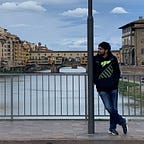E4: Future of Commute in India
Daily commuters in Indian cities face three major issues:
Rising fuel costs, pollution, and traffic.
One solution for this is a safe, accessible, and reliable public transportation system. City planning plays an important role in development of public transportation infrastructure. Read on to understand how it influences public transportation.
Here is a look at the metro maps of two comparable cities by population: Chicago, USA on the left, and Paris, France on the right.
Although other forms of public transport may exist in both the cities, I am focusing on the metro and tram lines because it is faster and more reliable than on-ground transportation like buses.
Chicago: As you can see, the Chicago metro’s only purpose is to transport people from suburbs to downtown Chicago, their workplace. So, essentially you can’t travel from one suburb to another suburb easily. Therefore, a car would be necessary to perform your daily commute if your workplace is not downtown.
But that is okay because the American cities have been designed for cars as they have built the infrastructure needed for it, i.e., wide highways.
Paris: If we look at the Paris Metro, it is very well connected. The metro is reliable and conveniently connects you to almost every other place. Therefore owning a car does not give you a significant advantage because public transport is well-connected and dependable. So, the city is designed for people to travel around in an efficient public transport network.
Let us look at the proposed and current metro map of a comparable and familiar city, Hyderabad. The proposed lines would take ten years to be implemented. :)
Even the proposed map doesn’t look like any of the examples we have taken initially, Chicago and Paris. The only good thing happening in the proposed map is the metro line being connected to the airport. Here is a study done by Harsha Devulapalli, a friend on Twitter, representing the metro lines and the population density of Hyderabad.
Well then, Hyderabad must be a city designed for cars then. But that doesn’t seem to be the case with six-lane roads merging into two-lane streets suddenly because of illegal land encroachment and frequent traffic congestion elsewhere.
So, Indian cities will have to move closer to being cities for cars or cities for public transport. And due to our problems with fuel costs, city for public transport seems better.
“A developed country is not a place where the poor have cars. It’s where the rich use public transportation” — Gustavo Petro, Mayor of Bogotá
City planning has been fragmented in most Indian cities. And when we think about it, it is essential for our cities that cater to the needs of more people than capital cities of developed countries. Ideally, development should chase infrastructure according to city planning, but here, people move into a place, and then the infrastructure is built, i.e., infrastructure chases development.
In terms of an ideal metro rail system, Delhi metro does operate on similar lines as many foreign public transportation systems. The Mumbai local also caters to large parts of the city but may not be considered safe and accessible for women, children, and senior citizens. Apart from these two public transportation systems in India, no other public transportation system in India is sufficient for their population. Our cities deserve much better public transportation systems. We are moving at a good pace to achieve these goals, and hopefully, we will make it there even sooner.
The development of public transport will also influence housing decisions of people and whether they will stay within the city or move out to the suburbs. This will be a point of discussion in the upcoming newsletters.
Have a Happy Sunday!
Sundays with DSK
Please signup for my weekly newsletter if you haven’t already. Thank You!
Newsletter Signup Link : Link
